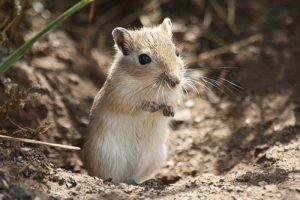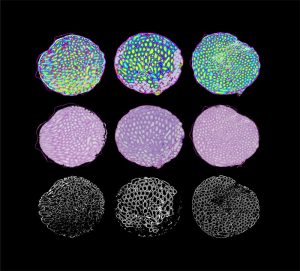Enter your address to receive notifications about new posts to your email.
Articles tagged Mouse & Rat
(27 results)
-
Early Career Leadership Spotlight: Anna Moyer
We’re taking time to get to know the members of the GSA’s Early Career Scientist Committees. Join us to learn more about our early career scientist advocates. Anna Moyer Accessibility Subcommittee University of Alabama at Birmingham Research Interest: I don’t remember very much about the birth of my little brother. I remember the way the light…
-
Sleep control gene conserved across millions of years of evolution
AP-2 transcription factors, which control sleep in flies and worms, are confirmed to do the same in mammals.
-
She has her mother’s coping style
Parent-of-origin effects help determine how lab rats respond to stress. Although your father and mother each contribute a copy of your genes, these copies don’t always play equal roles. Instead, one parent’s gene can have a disproportionate effect on the offspring’s phenotype, resulting in complex patterns of inheritance. In G3: Genes|Genomes|Genetics, Mont et al. examined…
-
Remapping lab rats
For the first time in nearly 15 years, the rat genetic map has been updated. Genetic maps help us navigate uncharted data, but to successfully use them to link genes to complex traits, their resolution must be high enough to yield a manageable list of candidate variants. That’s why genetic maps for mice and humans…
-
Imprinting impulsivity
Imprinted genes can have oppositional effects on adult behavior in mice. Mammalian genomes show the marks of a genetic tug-of-war between mothers and fathers. These imprinted genes are marked by epigenetic modifications, which means the expression of an imprinted allele depends on whether it was inherited from the mother or the father. A new report…
-
Off-balance mice shed light on inner ear development
The “hyperspin” long-range enhancer deletion recapitulates disease phenotypes. In recent years, improvements in genetic testing have made it much easier to discover the causes of rare genetic diseases, but sequence data can also present new puzzles. Take split hand/-foot malformation-1 syndrome (SHFM1), which causes limb deformities, such as joined fingers, and sometimes deafness. Candidate culprits…
-
Do longevity genes really influence aging?
A reanalysis of genes tied to life span in mice reveals only a select few affect aging. Like it or not, you are always getting older. The mechanisms responsible for this fact of life, non-negotiable as it is, remain poorly understood. To identify genes that drive the aging process, researchers typically look for those that…
-
Get outbred: Genetic diversity in laboratory gerbils
Biologists rely on animal models to answer important questions that can’t be addressed with cells in a dish. Often, these animals are deliberately inbred; a less diverse population of animals means that data obtained from experiments with these animals will be less noisy and easier to interpret, so fewer animals are needed for meaningful results.…
-
Chemical preserves mouse fertility after radiation
After surviving breast cancer, almost forty percent of female patients are affected by primary ovarian insufficiency (POI). This condition, in which ovaries don’t produce normal amounts of hormones or release eggs regularly, can result in health problems and an inability to have children. But POI isn’t caused by cancer itself—the actual culprit is DNA damage…
-
How the genetics of seizure susceptibility changes over time
Epilepsy is characterized by recurrent seizures, often with no immediately obvious cause. In the August issue of G3, Ferland et al. use a genome-wide association study in mice to show that after multiple seizures, the genetic basis of seizure variation shifts from previously identified genomic regions to new ones. This research shows that the genetic…
-
Behind the cover: Male infertility in the mouse Collaborative Cross
Fascinating discoveries sometimes emerge from the most daunting of experimental roadblocks. Designed to generate over 1,000 recombinant inbred mice lines for genetic mapping, the Collaborative Cross (CC) project unearthed astounding variation in male fertility when nearly 95% of the highly inbred CC lines went extinct. As part of the Multiparental Populations series in the June…












